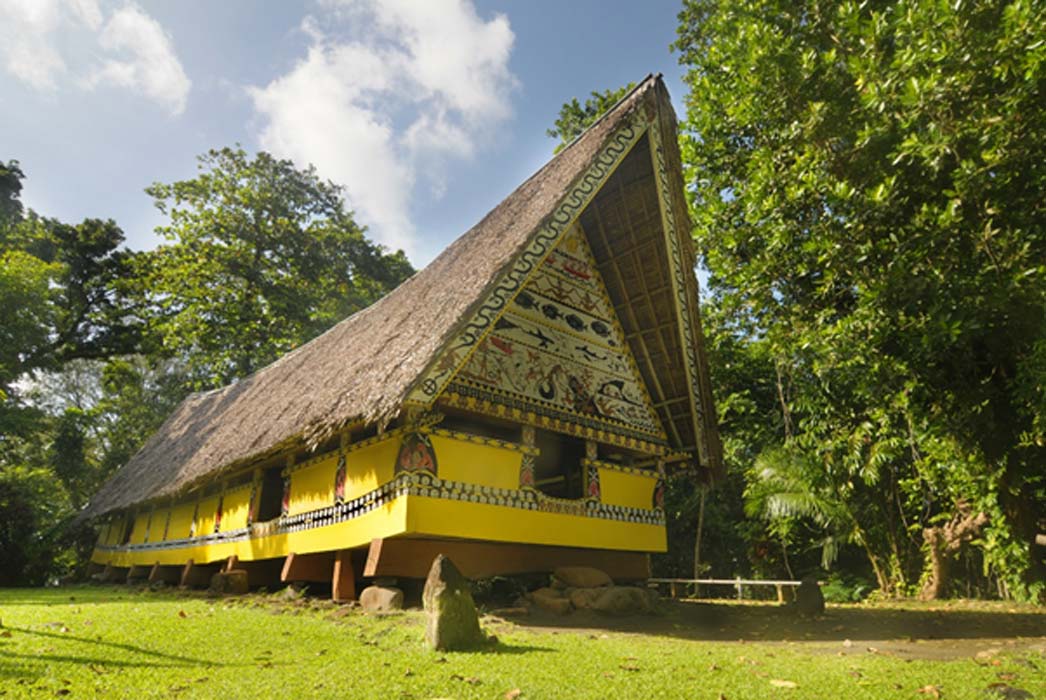Airai Bai: Men’s Meetinghouse in Tribal Paradise Where Women Rule the Land
The island Republic of Palau is not only beautiful, it has a rich traditional culture, as do many nations in the Pacific. Here, visitors can observe a traditional way of life that is authentic and not something that has been staged for the benefit of tourists. Airai Bai is a men’s meetinghouse where we can gain a unique insight into local customs.
The Location of Airai Bai
The meetinghouse is in the village of Airai, Palau, located on the southern coast of Babeldaob, the largest island in the Republic of Palau which is in the western Pacific Ocean and is made up of over three hundred islands, the majority of them are uninhabited. It is part of the Caroline Island chain and is considered to be part of Micronesia. Airai is quite mountainous, densely forested, and incredibly beautiful.

The natural beauty of Palau Island (Davidson, K /CC BY 2.0)
The History and Culture of Palau
Palau was first inhabited by Austronesian settlers, possibly from Indonesia. It developed a unique matrilineal society where women often played a dominant rule in government and religion. Lands were held communally and ‘queens’ appointed chiefs, who were always men.
There were several European attempts to rule the island, but they all failed until the Spanish conquered it in the 19 th century. The islands were later occupied by the Germans and Japanese and today it is an overseas territory of the USA.
The chiefs play an important role in society, and although this is in decline as Palau modernizes, extended family and clans are still central to their way of life.
Airai Bai Meetinghouse
The bai, a Palauan name for meetinghouse, is located on a stone platform in the center of Airai village where the previous bais stood in the past. The assembly hall is 79 by 20 feet (22 meters by 6 meters), and about 39 feet high (11.4 meters). The roof is woven from nipa leaves and tropical woods are used across the floors and walls. The bai was built around the end of the 19 th century during the Japanese occupation, but has been restored at least ten times in the past century as Palauan architecture is often damaged by extreme weather events. The building was constructed without nails and the joints are tied together. The main building rests on a number of logs and sits roughly two feet off the ground. It is likened by local people to a canoe on some posts.
The Cultural and Religious Importance of the Meetinghouse
The bai is the center of civic and religious life in the village of Airai. The building is used by the village’s ten chiefs who play an important role in the government and women need special permission to enter. Each of the chiefs represent their clan and have their own seat in the meetinghouse.
- The Megalithic Money of Yap
- Coral Tombs Housed Royal Micronesians 700 years ago
- Age of First Chief's Ancient Tomb Reveals Pacific Islanders Invented New Kind of Society
Every village in Palau has a god or spirit and the name of this deity in Airai, is Medechiibelau. It is believed that one of the chiefs is the representative of the god during meetings and new chiefs are selected based on recommendations from a local ‘queen’ or senior female clan member.

The interior of the meetinghouse (Photo by Pacificworlds)
The meetinghouse is also a repository of local myths and legends. Symbols such as the rooster, money bird, spider and bats are painted on the beams. These are parts of narratives that tell the story of the village and the spirit world. There are lamps that hang from the beams for lighting and in the center there is a wooden beam known as the Ngchongch which is a path for the gods so that they can join the meetings.
Paintings of delerroks, the mythical money bird, are found in all four corners of the meetinghouse and is believed to bring the meetings good fortune.
The Journey to Airai Bai
Airai Bai is in a clearing in the village of Airai, but there are no tours of the meetinghouse. Visitor are advised to ask a local for directions and the local keeper of the bai may ask for an admission fee. There is plenty of accommodation and tours are available in Palau’s capital.
Top image: Airai Bai meetinghouse Source: (robnaw/ Adobe Stock)
By Ed Whelan
References
Tellei, P. Palauan Bai (Meeting House): Parts and Depictions as a Pictorial Representation of Palau
Tmetuchl, R. 1998. The bai and the chief in Palau. Leadership in the Pacific Islands: Tradition and the Future, 17
Yamashita, V. J. 2012. The Storyboards of Palau: Cultural Expressions from Micronesia. University of Washington
Available at: https://search.proquest.com/openview/4221c7439c8b3e42fb65cfbf1b3b5a54/1?pq-origsite=gscholar&cbl=18750&diss=y

















